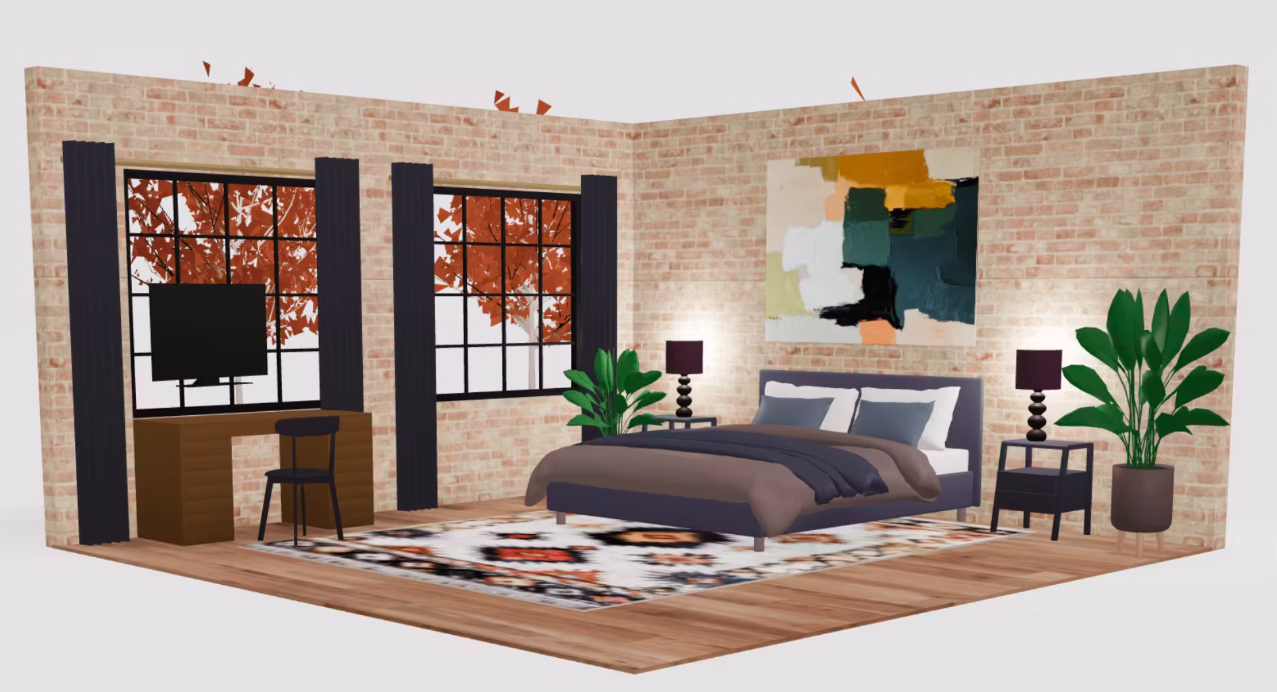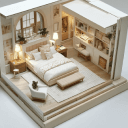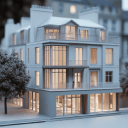Designing a room layout can be both exciting and challenging. You might have a vision for a cozy living room or a productive home office, but translating those ideas into a practical floor plan is the real test. The good news is that modern tools like Arcadium 3D make it easy for anyone to plan and visualize a stunning room layout without professional drafting skills.
As a 3D room designer, I’ve seen firsthand how the right approach, combined with a powerful tool – can transform any space. Below, we’ll explore inspiring room design ideas and show how you can bring them to life with Arcadium 3D’s help.
Check Out Our Room Designer
Embrace 3D Planning to Bring Your Vision to Life
In the past, planning a room often meant sketching on graph paper or playing trial-and-error with furniture. Now, embracing 3D planning technology is a game-changer. Using an online room planner such as Arcadium 3D allows you to build your room in a virtual space and see it just as it would appear in real life.
This means you can try out ideas risk-free – arrange and rearrange furniture, experiment with colors, or even knock down virtual walls, all without lifting a single piece of furniture in reality. Arcadium acts like a creative sandbox, giving you the freedom to try bold ideas in a risk-free virtual space.
When you’re happy with a virtual design, you can move forward with confidence, knowing exactly what to expect once you implement it in your home. Arcadium 3D essentially puts an entire design studio right in your browser – it’s truly a 3D home design online free without registration solution.
You can open Arcadium in a web tab and start designing immediately, with no downloads, no sign-ups, and no waiting around. This accessibility means anyone can jump in and begin crafting a dream room layout in minutes. The barrier to entry has never been lower, so even if you’re new to interior design, you have the tools at your fingertips to bring your vision to life.
Plan with Purpose and Precision
Before diving into decor, start with the fundamentals: the purpose of your room and its precise dimensions. Every great room layout begins with a clear understanding of how the space will be used. Ask yourself: Is this a space for entertaining guests, relaxing with family, working from home, or a mix of functions?
A family-friendly living room will have different needs than a home office or a hobby studio. Defining the room’s purpose from the outset guides all your design decisions – from the size of the sofa to the amount of storage you’ll need.
Next, measure your space carefully. It’s crucial to note the room’s length and width, ceiling height, and the placement of doors, windows, or any built-in features. There’s nothing worse than falling in love with a piece of furniture only to discover it won’t fit through the door or overwhelms the room’s proportions.
With Arcadium 3D, you can input these exact dimensions to create a true-to-scale floor plan. This ensures that as you add furniture and elements, everything is sized accurately and nothing is left to guesswork. For example, if your wall is 12 feet long, you can draw it exactly 12 feet in the tool, so your virtual layout mirrors reality.
Precision pays off. By mapping your room’s dimensions in Arcadium first, you’ll avoid costly mistakes and design a layout that fits just right. The software even provides smart guides and measurements as you draw walls or place items, so you can double-check clearances and ensure doorways aren’t blocked. Think of this step as building a solid foundation – once your digital room is measured and built correctly, you’re free to unleash your creativity on a reliable canvas.

Experiment with Layouts Risk-Free
One of the most inspiring parts of using a 3D planner is the ability to experiment freely with different layouts. Rather than committing to one arrangement, try out several! Arcadium 3D makes this easy: you can drag-and-drop furniture, move pieces around, or swap one couch for another with a few clicks.
Not sure if your sofa would work better against a different wall? Test it virtually. Wondering if a room would feel more open by relocating the dining table? Try it out and walk through the 3D scene to sense the difference.
Arcadium’s room designer lets you map out your floor plan to exact dimensions and play with furniture placement before you ever lift a finger. In this overhead view, every wall length and doorway is measured precisely, and pieces can be rearranged in seconds. This level of flexibility empowers you to explore multiple layout ideas until you find the perfect fit.
Don’t be afraid to play with scale and configuration. Maybe you’ve always assumed the sofa must face the television, but what if angling it differently creates a better conversation area? In a virtual design tool, no idea is too bold to try. You can save different versions of your layout or use Arcadium’s duplicate scene feature to branch off a new idea while keeping the original.
This way, you’re not locked into one plan – you have the freedom to iterate. Many professional designers work through numerous concepts, and now you can do the same at home. By the time you settle on a layout, you’ll know you’ve explored the possibilities and chosen the best one.
Anchor the Design Around Focal Points
Every well-designed room has a focal point or an anchor piece that grounds the space. It could be a bed in a bedroom, a sofa in a living room, or even a dramatic fireplace or piece of art. Identify what that main feature is for your room, and design around it. For instance, if the focal point is a fireplace, arrange your seating to face it and ensure it remains visible from key angles. If it’s a bed, other pieces like nightstands and dressers will orient in relation to it.
Start your layout by placing this anchor piece first. In Arcadium 3D’s library (which includes thousands of furniture and décor items), you can easily find a full-size sofa, a king bed, or any major piece you need. Drop it into your floor plan and see how it feels in the space.
Because Arcadium models are true-to-scale, if you select a king-size bed, it will occupy the exact footprint it would in real life – no guesswork needed. This helps you immediately check if the room can comfortably accommodate your main furniture or if you need to scale down.
With your anchor in place, build the rest of the layout around it. Arrange secondary furniture (like side tables, chairs, or a desk) in relation to the main piece. Arcadium’s 3D view is invaluable here: as you add items, switch to the 3D perspective to ensure the focal point remains prominent and the room looks balanced from multiple angles.
For example, you might discover in 3D that a tall bookshelf is overshadowing your focal point; you can then reposition it elsewhere. Centering your design on a focal element creates a natural sense of order and harmony in the room.
Divide Your Space into Functional Zones
If your room serves multiple purposes or is an open-plan layout, a great idea is to divide it into functional zones. Rather than letting a large space feel undefined, break it up visually into areas for specific activities. For example, in a studio apartment or an open living/dining area, you might have a relaxing zone (with sofas and TV), a dining zone (table and chairs), and maybe a work zone (a desk nook). Defining these zones makes your room more organized and purposeful.
You can use design elements to create boundaries for each zone without erecting walls. Rugs are a classic tool – placing a rug under your seating group distinguishes the living area, while a different rug under the dining table sets that space apart.
Similarly, strategic lighting helps: a pendant light can define a dining spot, whereas a floor lamp and table lamps cozy up a lounge corner. In Arcadium 3D, you can experiment with these tricks by adding rugs of various sizes or placing lighting fixtures above virtual furniture. Try out different rug placements or lighting arrangements to see how they
visually section off
space.
Furniture placement is another zoning strategy. A sofa, for instance, can act as a subtle divider when it’s placed with its back toward another area, like separating a living area from a kitchenette. In Arcadium’s planner, you might position a couch not against a wall but floating such that it creates a boundary behind it.
Houseplants, screens, or open shelving can also delineate zones while maintaining an open feel. The beauty is that with a 3D model, you can gauge whether each zone feels adequately separated yet cohesive. This way, you’ll maximize your room’s functionality – every part of the room will have a purpose and none will feel neglected or overcrowded.
Check Out Our Room Designer
Ensure Comfort and Flow
A well-thought-out layout not only looks good but feels good to live in. An essential idea for any room design is to ensure comfortable flow – the ease with which people can move through the space. Great layouts don’t block pathways; they create a natural flow of movement. As you arrange furniture in Arcadium, continually check the spacing between pieces.
Walkways should be wide enough (aim for at least 24–30 inches, or about 60–75 cm in high-traffic areas) so you can stroll through without bumping into furniture. Using the top-down 2D view in Arcadium, you can measure these distances exactly, and in the 3D view you can literally walk the pathway using the first-person mode to see if it feels cramped.
Pay attention to doorways and drawers as well – ensure doors can swing fully open and that you have room to pull out chairs at a table or open cabinets. In a digital design, you might place a dining chair and then pull it out in the model to visualize the space needed when someone is seated. If it collides with a wall in the virtual model, you’ve saved yourself from a mistake you would’ve discovered too late in reality.
Another tip: don’t shove all your furniture against walls by default. While it might seem like pushing pieces to the periphery creates more room in the middle, it can actually make a space feel awkwardly empty in the center and cramped along the edges. Try floating key furniture a few inches away from walls – or even a couple feet if the room is large.
For instance, angling a chair in a corner or pulling the sofa off the wall slightly can foster a more inviting, conversational atmosphere. With Arcadium’s drag-and-drop ease, you can test these subtle changes and immediately see the impact in 3D. Often, a layout with furniture grouped intelligently (not just lining the perimeter) feels more balanced and welcoming.
Remember, visual balance matters too. Distribute large, heavy pieces so that one side of the room doesn’t carry all the weight. If most big furniture (like a bookcase, sofa, and cabinet) ends up on one side, the room can literally and figuratively feel lopsided. Instead, offset a bulky sofa on one side with perhaps a cluster of chairs or a console table on the other.
You can also balance a tall item on one side of the room with a tall item (or art piece) on the opposite side. Arcadium’s 3D view helps here: take a step back in the virtual room and scan the scene – is one side cluttered and the other sparse? Rearrange until the room feels visually even. By playing around in the model, you’ll develop an eye for creating harmony in the composition of your space.
Leverage Realistic Visualization for Details
Design is in the details. Once you have a solid layout (walls, main furniture, and flow), the next set of ideas involves refining the ambiance and finer points of the room. This is where Arcadium 3D’s realistic visualization features truly shine. You can switch from the 2D floor plan to a full 3D render at any moment, allowing you to see exactly what your room would look like with different elements.
Use this to your advantage: experiment with wall colors, flooring materials, and textures. For instance, try out a bold accent wall behind your sofa in the virtual model. Does it add character, or overwhelm the space? With a few clicks, you can recolor walls or swap a carpet for hardwood to see how each choice transforms the mood.
Lighting is another critical detail. Arcadium’s design tool lets you adjust lighting and even simulate natural light by changing the sun’s position for daytime or evening. Idea: Set up various light fixtures in your design – overhead lights, floor lamps, under-cabinet lights – and use the 3D view to see how shadows and brightness fall in the room.
This helps in deciding if you need an extra lamp in that dark corner, or if a statement pendant light properly highlights the dining table. Good lighting can make a layout more functional (task lighting where you read or cook) and also more inviting. By visualizing it all beforehand, you ensure there are no unpleasant surprises like a pendant that’s too low or a poorly lit work area.
Perhaps one of the most impressive features for fine-tuning your design is Arcadium’s first-person walk-through mode. With a click, you can virtually step into your room and roam around as if you’re actually inside it. This perspective is incredibly valuable for checking sightlines and the overall feel.
Walk through the entryway – what’s the first thing you see? Make sure it’s something pleasing, like that artwork or a glimpse of the window view, rather than the back of a TV or a cluttered shelf. Stand in different spots virtually to see if anything blocks your view or makes the space feel confined.
For example, you might realize that a tall shelf near a doorway feels like a barrier when you “enter” in 3D, prompting you to choose a lower cabinet there instead. These subtle adjustments can turn a good layout into a great one, and you’ll only catch them when you experience the room in a realistic way.
Finally, Arcadium’s high-quality rendering allows you to capture snapshots of your finished design ideas. It’s not only satisfying to see a photorealistic image of your future room, but also useful – you can show these visuals to family, roommates, or contractors to share your vision. It’s much easier to get everyone on the same page when they can see the end result you have in mind, rather than trying to describe it with words alone.
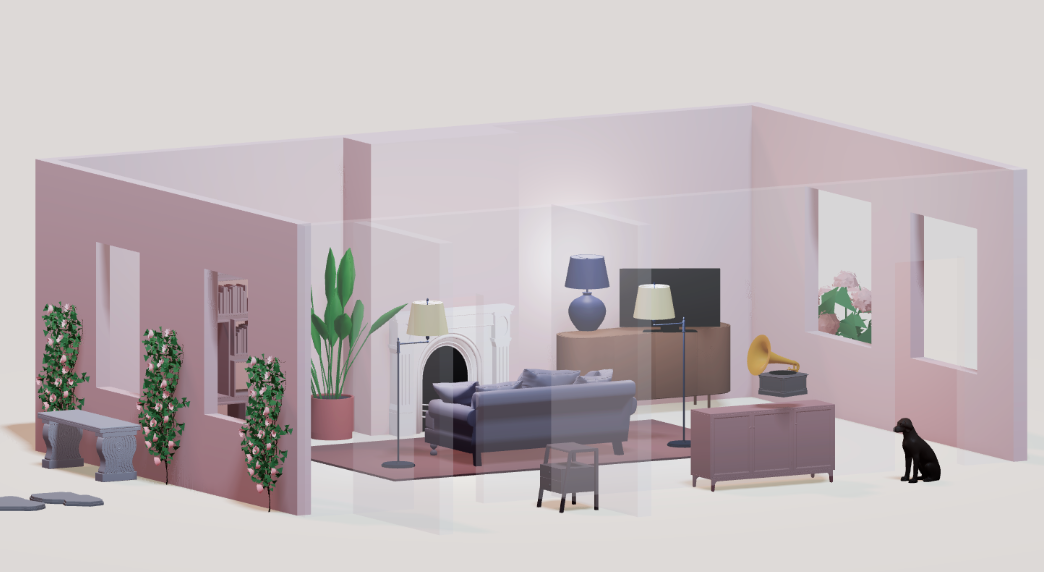
Don’t Forget Storage and Practical Needs
Amidst the excitement of picking paint colors and stylish furniture, it’s easy to overlook storage and practicality – but these can make or break your room’s functionality. A beautiful layout quickly loses its charm if everyday clutter has nowhere to go.
So, as you plan your design, integrate storage solutions into the layout from the beginning. Think about what needs to be stored in this room. Do you have a lot of books, toys, or hobby supplies? Will you need cabinets, shelves, or a closet system?
Arcadium 3D’s library includes a range of storage furniture – from bookshelves and TV consoles to wardrobes and kitchen cabinets. Place these in your virtual room to ensure you have enough spots to tuck things away. Perhaps add a credenza behind the sofa for board games, or floating shelves on a wall for décor and some extra storage baskets.
You can even visualize built-in ideas: for instance, design a wall of custom cabinetry or an under-the-stairs storage area using the tool’s shapes and resizing features. Seeing it in 3D confirms that the storage piece fits the space and complements the layout. It’s much easier to adjust or resize in the planning stage than after buying a unit that’s too large or small.
Be honest with yourself about daily life needs. If this is a family room, do you have space for kids’ toy bins? If it’s a home office, where will files and stationery go? By addressing these questions in your design phase, you’ll create a room that’s not only stylish but also livable.
Arcadium allows you to plan these details so your layout accounts for both form and function. For example, you might realize you need an extra bookshelf in that empty corner – better to include it now than wonder later where to put your growing book collection. A well-organized room with adequate storage will keep clutter at bay, letting your design shine.
Transforming Your Space with Confidence
The ultimate goal of these room design ideas is to empower you to transform your space with confidence. Whether you’re refreshing a single room or planning an entire home layout, Arcadium 3D serves as your trusty companion through the process.
It bridges the gap between imagination and reality: you can brainstorm freely in the virtual world and then execute your favorite ideas in real life knowing they’ve been tried and refined. This approach is how professional designers work, and now it’s accessible to anyone.
Perhaps the most remarkable aspect is how Arcadium 3D makes advanced design capabilities simple and accessible. It’s an AI-powered, browser-based platform that lets you draw your floor plan, furnish it with realistic models, and see instant 3D results – essentially having a virtual interior designer at your fingertips, for free. There is no cost to start designing and no steep learning curve.
In fact, the interface is so intuitive that beginners can often sketch out a room and fill it with furniture within minutes. And yet, beneath that user-friendly surface, you’re getting professional-grade accuracy (down to individual millimeters for measurements) and high-quality visualization. Arcadium 3D truly balances power and ease of use, which means anyone reading this can take these inspiring layout ideas and actually implement them without hesitation.
In summary, the key ideas to inspire your next room layout are: start with a clear plan, use 3D tools to experiment boldly, focus on focal points, establish functional zones, ensure good flow, refine details with realistic previews, and always keep practical needs in mind. By following these principles and leveraging Arcadium 3D as your design toolkit, you can transform any room – turning an empty or challenging space into one that’s beautiful, functional, and truly your own.
Now, let’s address some common questions you might have as you get started on your room design journey:
Learn More About - The key principles of room layout design
Frequently Asked Questions | Arcadium 3D
Q: How can I start designing my room layout online for free?
You can begin by measuring your room dimensions and then using a free online planner like Arcadium 3D to recreate the space virtually. Arcadium 3D is browser-based and completely free, so you just open the website, set up your room’s walls with the correct measurements, and you’re ready to add furniture and décor. There’s no need to download software or enter payment details – you can start designing in seconds.
Q: Do I need any design experience to use Arcadium 3D?
Not at all. Arcadium 3D is designed to be beginner-friendly, with intuitive drag-and-drop controls and helpful tooltips. Even if you’ve never used a design tool before, you can draw walls, place furniture, and visualize your room with ease. It’s a great way for DIY home designers to get professional-looking results without formal training. Many users compare the simplicity to playing a game – it’s fun and easy to learn.
Q: Is Arcadium 3D really free to use?
Yes – Arcadium’s core features are completely free to use , with no hidden fees or required subscriptions. You can create unlimited projects, access the full furniture and materials library, and even generate realistic 3D walkthroughs without paying anything. There are optional premium upgrades (for things like ultra-high-resolution renders or advanced export options), but for most home design needs, the free version has you fully covered.
Q: What devices can I use Arcadium 3D on?
Arcadium 3D runs entirely in your web browser, so it works on virtually any device with an internet connection. You can use it on a Windows PC or a Mac, and even on a Chromebook or tablet. Since there’s no software to install, you can start a design on one device (say, your laptop at home) and then open it on another (like your tablet when you’re shopping for furniture) seamlessly. All you need is a modern browser like Chrome, Firefox, or Safari.
Q: How realistic are the 3D designs in Arcadium 3D?
The designs in Arcadium are highly realistic. The tool uses a physics-based 3D renderer, meaning lighting and materials appear as they would in real life (you’ll see shadows, reflections, and accurate colors). The furniture and decor models in the library are true-to-scale and detailed, so when you place a sofa or a lamp, you’re seeing a close representation of the actual item’s size and look. You can even take a virtual walkthrough of your room to experience it from a first-person perspective. All these features help ensure that what you see on screen will match how things feel in your actual space.
Q: Can I try different styles and decor in my design?
Absolutely. Arcadium 3D’s vast library has thousands of furniture and décor pieces from various styles – modern, traditional, minimalist, rustic, you name it. You can experiment with swapping furniture to see what style suits your room best. Additionally, Arcadium offers an AI-powered visualization feature: after laying out your room, you can have the AI re-style it into different themes (for example, turning your design into a Scandinavian-inspired look or a cozy rustic cabin) with a single click. This is a fantastic way to get inspiration and explore multiple design possibilities without having to manually redecorate each time.
Q: How do I share my room design with others?
Sharing your design in Arcadium 3D is very simple. The platform allows you to generate a shareable link to your project with one click. You can send this link to anyone – your family, friends, or an interior designer – and they’ll be able to view your room in 3D on their device, even if they don’t have an Arcadium account. This makes it easy to get feedback or collaborate. For instance, if you want a second opinion on your layout, just share the link and the other person can explore the design interactively and give you their thoughts.
Check Out Our Room Designer


 All training, tips and articles
All training, tips and articles
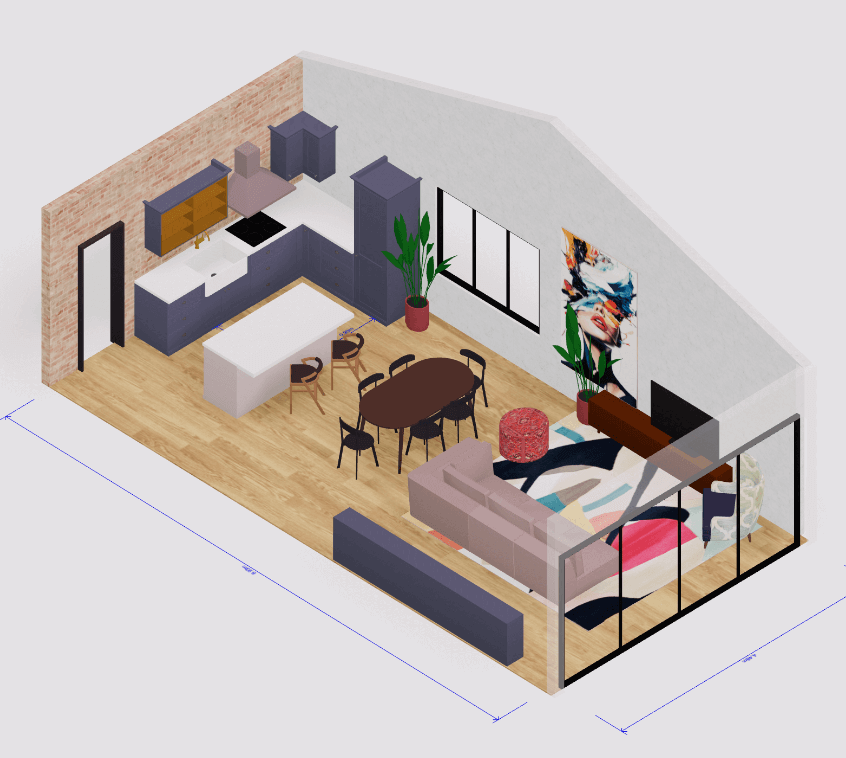 3D house design tool
3D house design tool
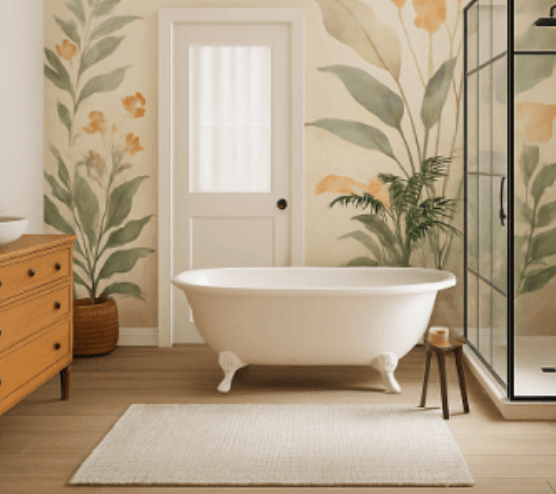
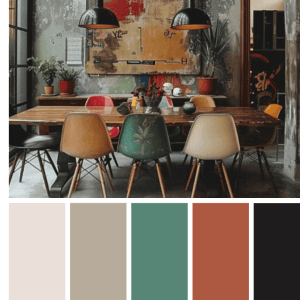 Color palette generator
Color palette generator
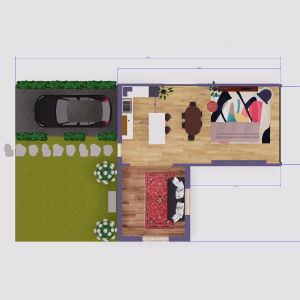 Floor plan creator
Floor plan creator
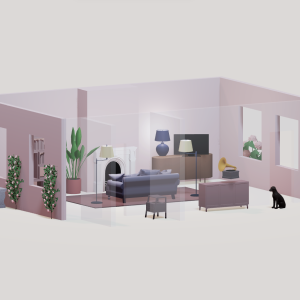 Interior design app
Interior design app
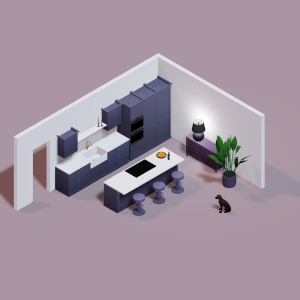 Kitchen design tool
Kitchen design tool
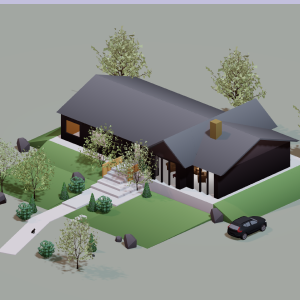 House design software
House design software
 Room designer
Room designer
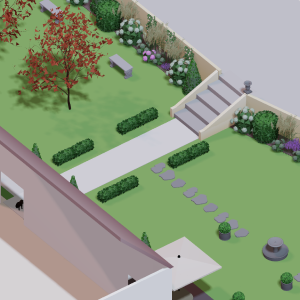 Landscape design software
Landscape design software
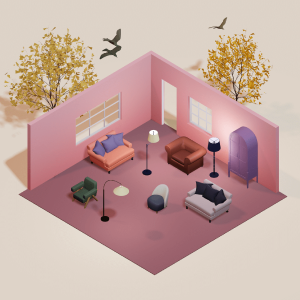 Bedroom design
Bedroom design
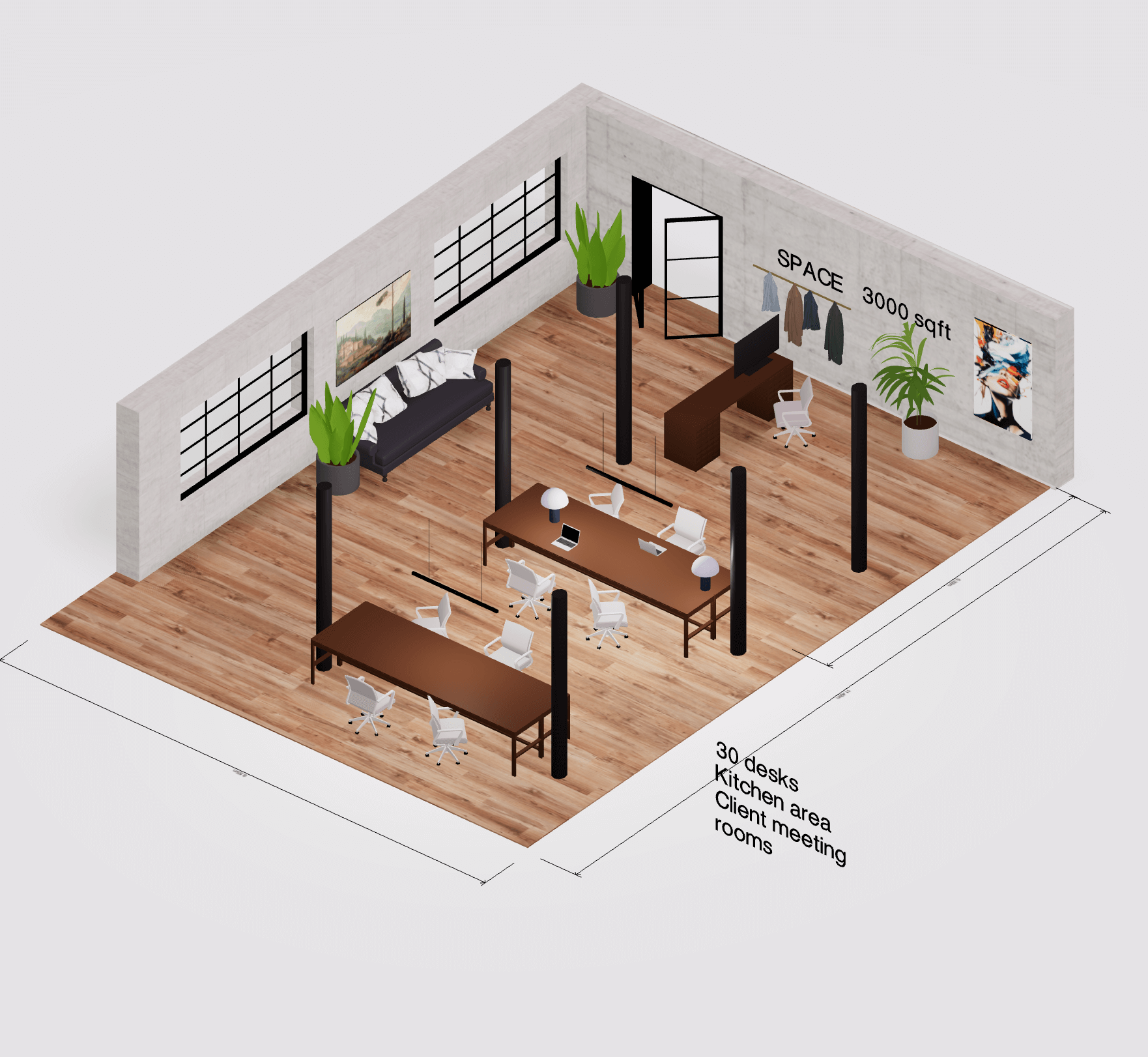 Office floor plan creator
Office floor plan creator
